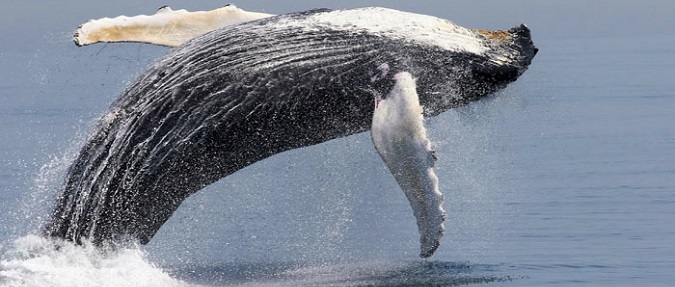Are humpback whales still endangered, or have their populations recovered enough since whaling ended that they can now be taken off the Endangered Species List?

NOAA Fisheries scientists have spent several years researching this question, and their answer is not a simple yes or no. Instead, the Agency identified 14 distinct population segments of humpback whales, 9 of which we identified as not warranted for listing under the Endangered Species Act (ESA). The other five still appear vulnerable to extinction and require the continued protection of the ESA.
Humpback Whales Make a Comeback
Humpback whales have rebounded in many areas, with high abundance and, in some areas, steady rates of population growth. This determination is based on a recent review of the best available scientific and commercial information by an expert group of scientists.
We identified 14 distinct population segments of humpback whales. A distinct population segment is a term coined in the 1978 amendments to the Endangered Species Act (ESA) that allows species to be divided into distinct subgroups or populations and listed under the ESA, based on a number of characteristics.
Of the distinct population segments identified, 9 appear to no longer be in danger of extinction or likely to become endangered in the foreseeable future. For instance, the West Indies population is growing at 3.1 percent a year and the East Australia population is growing at an average rate of almost 11 percent a year.
Changing Status, But Not Protection
We determined that abundance was high enough and threats low enough for 9 distinct population segments, and therefore these distinct population segments did not warrant listing as threatened or endangered.
This doesn’t mean humpback whales are left unprotected. The other five distinct population segments that still appear vulnerable to extinction will remain under ESA protection. In addition, the Marine Mammal Protection Act provides substantial protections to all marine mammals, including humpback whales, in U.S. waters and on the high seas from any person subject to U.S. jurisdiction. This protection exists regardless of whether each distinct population segment is listed under the ESA. Additionally, the International Whaling Commission’s moratorium provides protection from commercial whaling, which was once a major threat to the species.
Adding Management Flexibility
The changes are significant because we recognize that the species as a whole is doing well and most populations increased in abundance. Moving forward, having identified these distinct population segments, we now have the flexibility to focus our efforts where they are needed the most: on those specific populations that are in danger of extinction or likely to become so in the foreseeable future.
